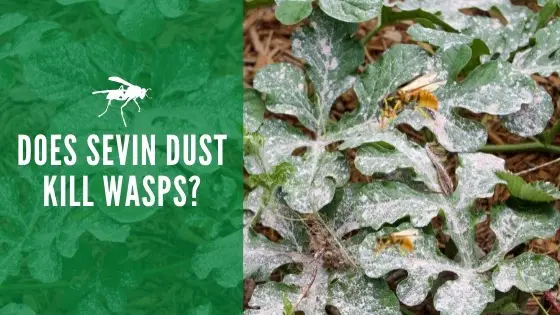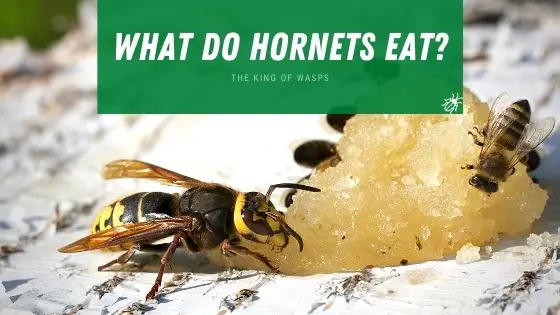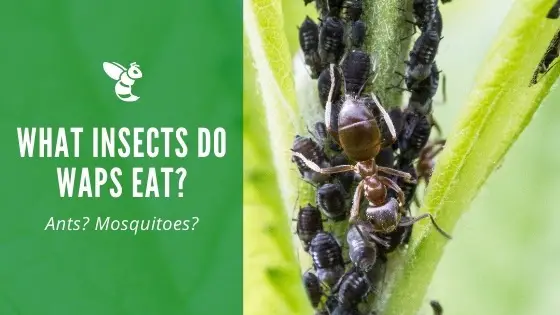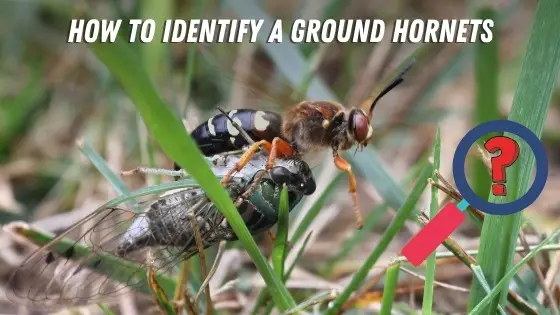Does Sevin Dust Kill Wasps?

Sevin dust is insecticide dust that contains carbaryl, which is a pest control product that has been used for years. It is very effective against garden pests and is only mildly toxic to humans and other beneficial insects. The biggest problem with sevin dust is that t is a broad-spectrum insecticide that kills more than the damaging insects.
Sevin dust kills a wide variety of insects, including wasps. Wasps are irritating and pesky creatures that can ruin your outdoor experience. It is important that you take the proper steps to get rid of wasps for good.
The Dangers Of Wasps
Wasps tend to come in swarms, and all of them are armed with long and sharp stingers that can turn into deadly weapons. If you have pets, young children, or people in your life who are allergic to wasps, then you need to remove them immediately. The dangers of wasps can turn a peaceful backyard into a scary place.
How To Apply Sevin Dust for Wasps
Sevin dust is a carbaryl, a chemical that belongs to the carbamate family. It’s used mostly as an insecticide and can be found in various parts of the world. While wasps may not be on the list of pests mentioned on the Sevin dust bottle, carbaryl has been proven effective on wasps and other flying insects. Many homeowners are reporting that newer Sevin dust may no longer contain carbaryl so be sure to double-check the label before you purchase.
Unlike other types of pesticides where you need to mix an essential oil or measure certain amounts of mixture to be effective, you don’t need to worry about all that with Sevin dust. You can cut open the bag and get it inside the nest, as the poison works on contact.
Since most wasps’ nests will be hanging upside down, a hand duster is an ideal tool for deploying the dust. You need to make sure that it gets onto the wasps directly and not just into the opening of the nest. If too much of the dust blocks the nest entrance, wasps will not be able to enter and exit the nest to spread the dust further.
If the wasp are coming from a ground nest like yellow jackets and the cicada killer, you can blast the dust directly into the opening and retreat as fast as you can.
Use Caution
Of course, you will need to get very close to the wasp nest to make sure that the dust gets inside. Make sure to wear protective gear without exposed skin or have a professional do it for you. You want to minimize the risk of getting stung while maximizing the amount of dust you get into the hive.
If you can’t buy or rent a beekeeper’s kit, then you should wear long-sleeve shirts and pants, gloves and thick socks, and some head covering that still lets you see. If you have patches of exposed skin, such as between your sock and your pant leg, you can cover those with duct tape.
Approach the nest carefully, and try not to make any sudden moves. Instead, focus on the task at hand and make sure that you move fast. Ignore any wasps that seem to hover around you, as these are mostly curious rather than aggressive.
If you hear any loud buzzing or the wasps start to swarm you, back away from the area and take shelter indoors. Having an escape plan before approaching a wasp nest is always a good idea.
How Long Does It Take Sevin Dust To Kill Wasps?
The carbaryl needs to either come into contact with the wasp’s body or needs to be consumed. After the contact, the dust disrupts the nervous system of the insect and causes death. This can cause death in about 24 hours, and after a while, the entire nest will be filled with dead wasps.
To get the most out of the dust’s properties, you should try to apply the dust in the early morning. Not only are most of the wasps still asleep to mitigate the risks of stings, but they can then go out and get covered in the dust as they go about their day.
Using Food To Kill the Wasps
Of course, if you aren’t particularly excited to have to get up close and personal with a horde of angry wasps at their home, you can use food to get rid of them. You can spray the Sevin dust on flowers and any other sources of sugar that wasps congregate around.
Not only do the wasps come into contact with the food items, but they also bring the contaminated food back to their nests and feed it to others.
It’s a slightly slower process than simply spraying the dust into the nest, but it can be a viable method if you don’t want to get stung.
Using Sevin Dust Safely
The same materials you use for the wasp nest removal should also be used when applying Sevin dust to your garden. You should have gloves, long sleeves, and a face covering to avoid breathing the dust in. Make sure to work backward, so you aren’t stepping back into a cloud of dust.
The carbaryl is something you don’t want to get in your mouth or on your skin, so make sure that you are careful with it. Similarly, if you have children or young pets, you will want to keep them away from the affected areas of your garden or yard, as they are very susceptible to the effects of the dust.
Finishing Off Your Wasp Problem
Once all of the wasps are dead or have moved on, you can safely remove the nest and dispose of it. Then just keep an eye out to see if any new wasps appear. If they do, you know exactly how to handle them!
Wasps can be a dangerous pest to have in your garden, but with a little bravery and the right tools, you can make short work of their nests. After that, you’ll have your yard back!
Many other similar insecticide dust brands on the market are specifically designed to get rid of wasps and other stinging insects if Sevin dust doesn’t work. You should also remember that some solitary wasps can be beneficial insects that keep your yard clear of other more harmful pests.



